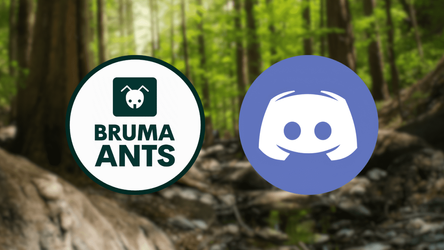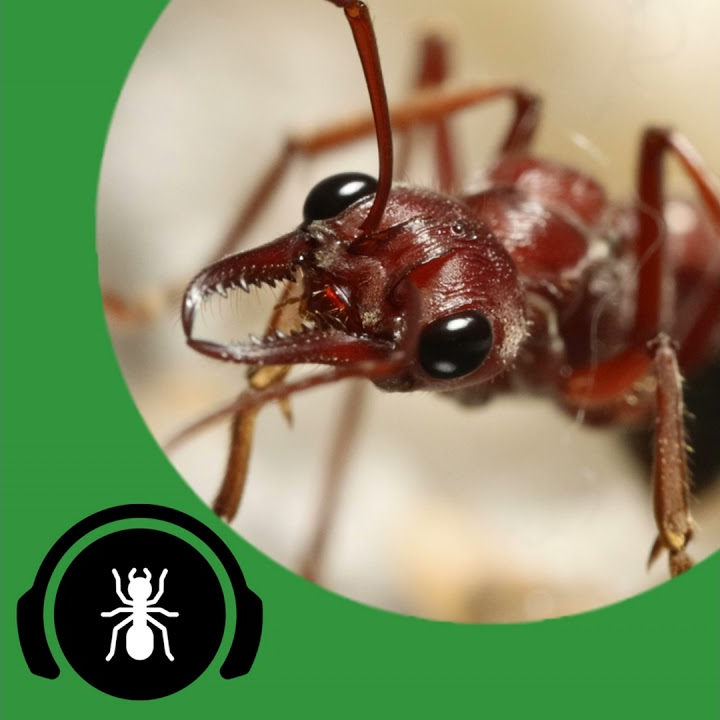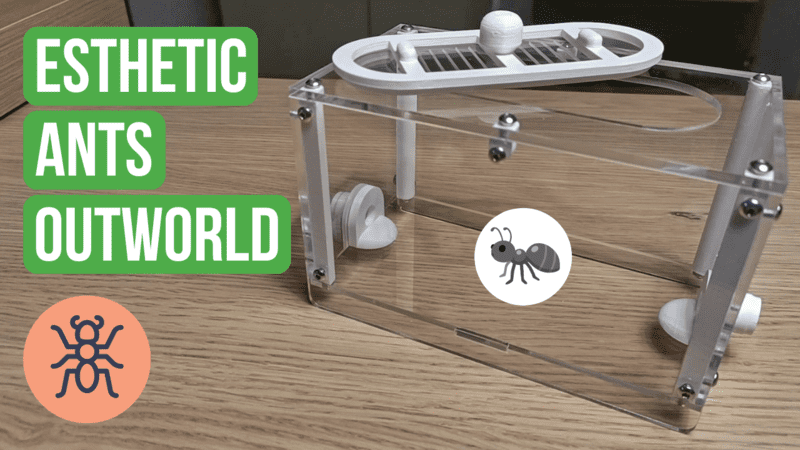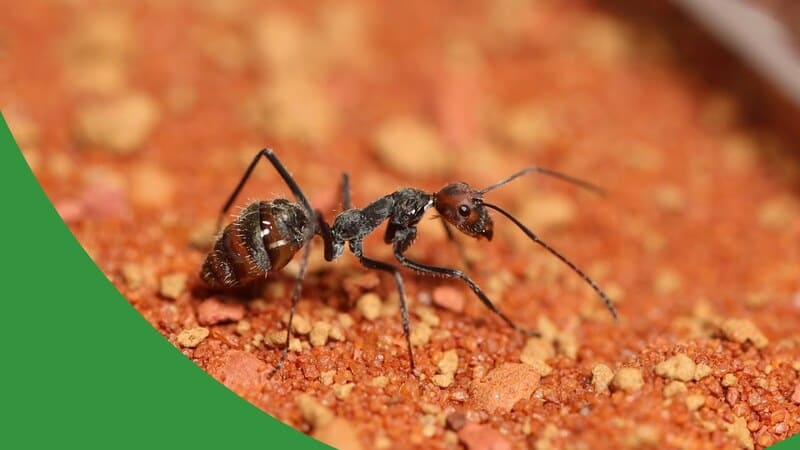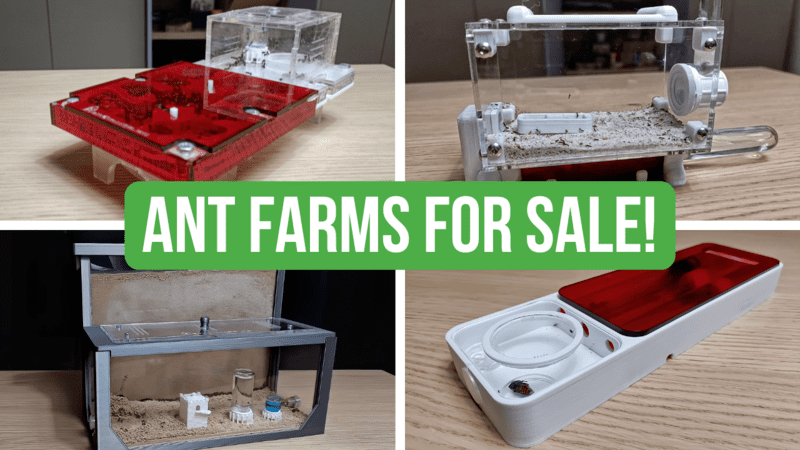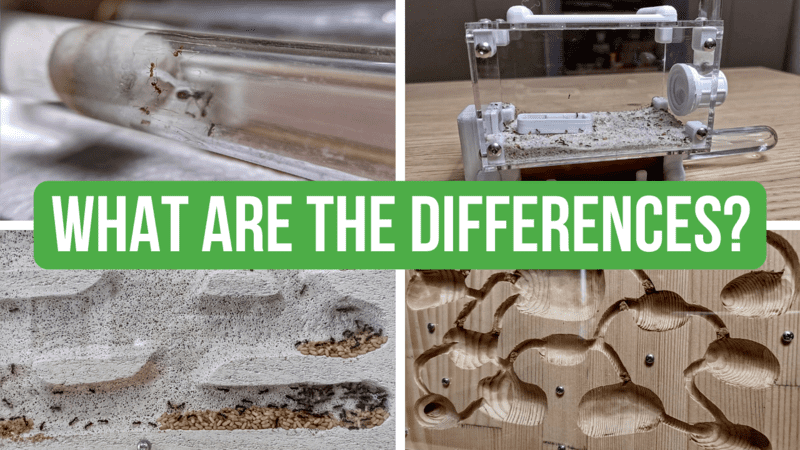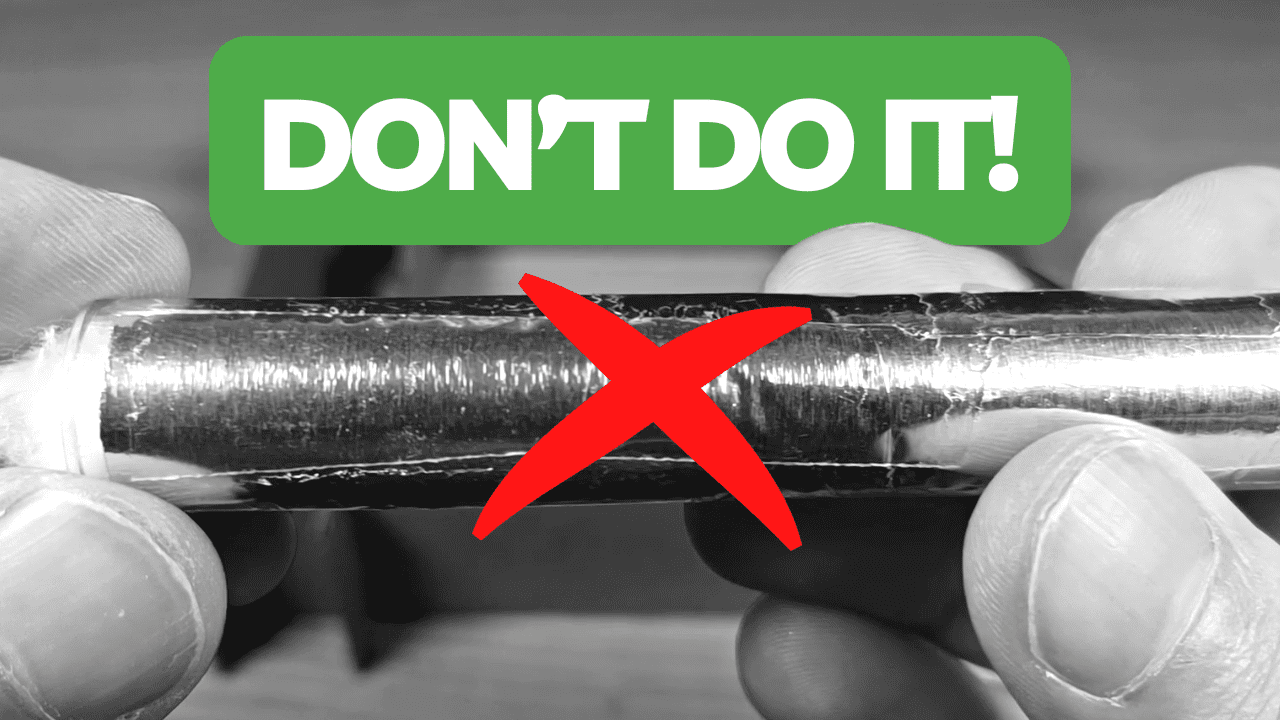How To Care for Messor Barbarus

Hi guys! I hope you’re doing well!
Today we are going to learn how to care for a very common ant species: Messor barbarus. By the end of the guide, you will have all the information you need to start growing your own Messor barbarus colony all by yourself!
Let’s get into it!
Download
Introduction
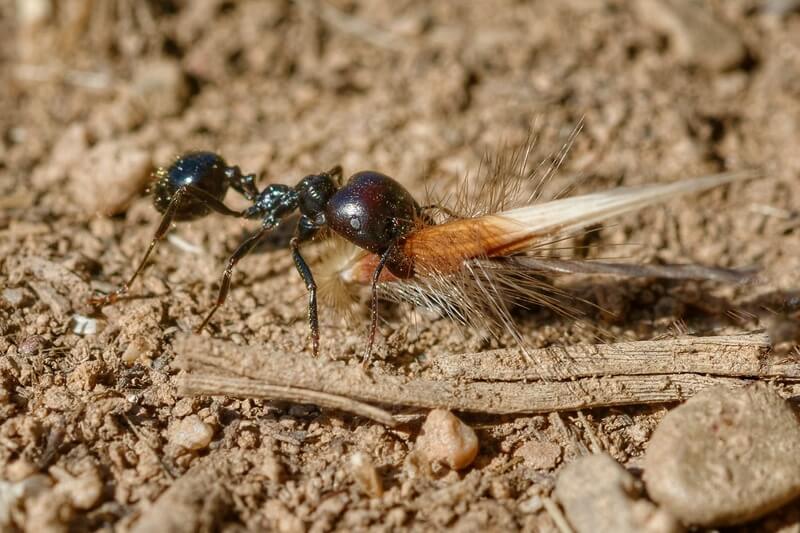
Messor barbarus is a species of harvester ant, and it is mainly found in Southern Europe and Northern Africa.
Harvester ant, or harvesting ant, is a common name given to any of the species of ants that collect seeds. These species of ants like to store the seeds inside the nest, keeping them ready for every eventuality.
They usually store them in dedicated nest chambers called granaries, where the climate is drier and the humidity levels are lower than in other chambers.
They do this to prevent the seeds from germinating inside the nest. Pretty clever, don’t you think?
Messor barbarus is polymorphic, which means that the workers of this species have different sizes. The queen size ranges from 14 to 17 mm, and from 3 to 8 mm for the minor workers. The majors can reach a length of up to 14 mm, and in some cases, they can even equal the size of the queen!
This species is very easy to recognize! They are quite clumsy when walking around, and they are not very good climbers. The majors have an oversized, big red head, which they use to break the seeds they eat.
Messor barbarus is monogyne, which means that the colonies of this species accept only one queen.
The nuptial flights of this species usually occur in the spring, between late March and June.
Distribution
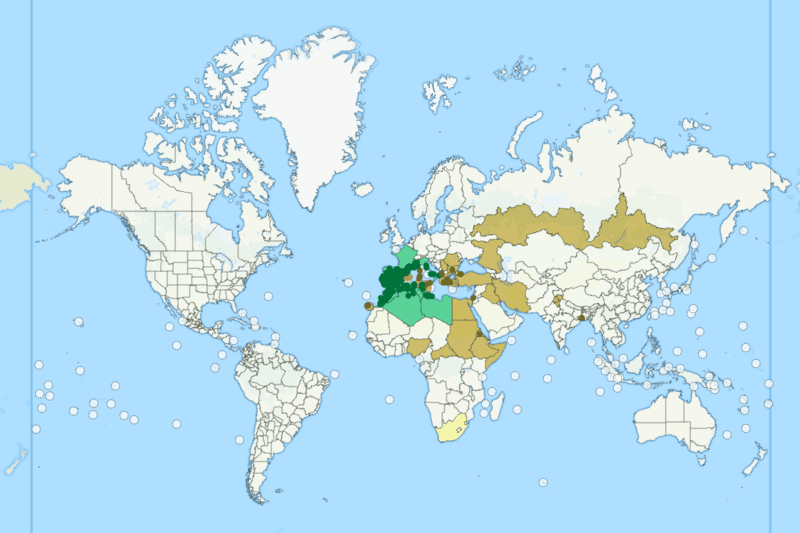
Temperature
Messor barbarus, like many other Mediterranean species, is very adaptable to temperature changes. They do not have very strict temperature requirements, and they can easily be kept at room temperature.
However, the ideal temperature for this species is between 21 and 26 degrees Celsius. If you live in a cold area or usually use an air conditioner in the room where your ants are, a heat mat or heat cable could be useful.
By raising the temperature of the nest, the metabolism of the brood will accelerate, reducing the time needed for the ants to fully develop into adults.
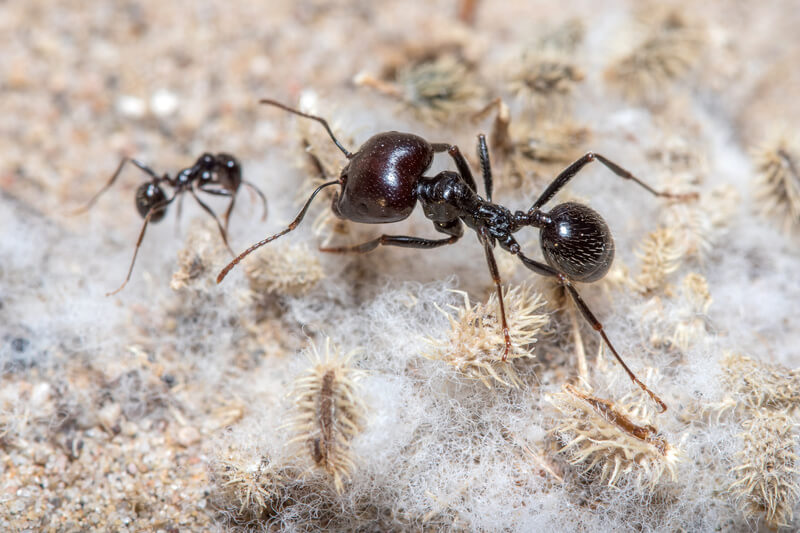
When keeping this species, you have to consider that they are from very hot Mediterranean regions, like Spain and some parts of Italy. In the wild, they can handle temperatures up to 30 degrees Celsius with no problem!
If kept at a relatively low temperature, their metabolism may slow, and the queen may lower her egg production.
Messor barbarus is also an extremely fast-developing species! If provided with the right temperature, the colony starts to grow exponentially and can reach 1000 workers in a few years!
Humidity
When it comes to humidity levels, Messor barbarus doesn't have extreme demands. They like a range of moisture levels that goes from 50% to 60%, which is typical of the Mediterranean climate.
This range of moisture is perfect for the chambers dedicated to the brood and the colony. For the granaries, the chambers dedicated to the seeds, the moisture should be very low, ideally in the 10% to 50% range.
Food
Like almost every ant species, Messor barbarus needs some sugar for the workers and some protein for the queen and the brood.
Given their fast growth rate, they need a lot of protein.
Proteins are the building blocks of every animal body and are essential for the development of the ants. The queen needs protein for the production of eggs, which will grow into larvae and then into pupae.
During the life cycle of the ant from egg to adult worker, the brood needs a lot of protein to successfully complete their various stage changes. Once the body of the ant is fully formed, the need for protein decreases, and the need for sugar takes its place.
However, unlike other species, Messor barbarus can obtain all necessary nutrients solely from eating seeds. The seeds contain protein, carbohydrates, and also fats!
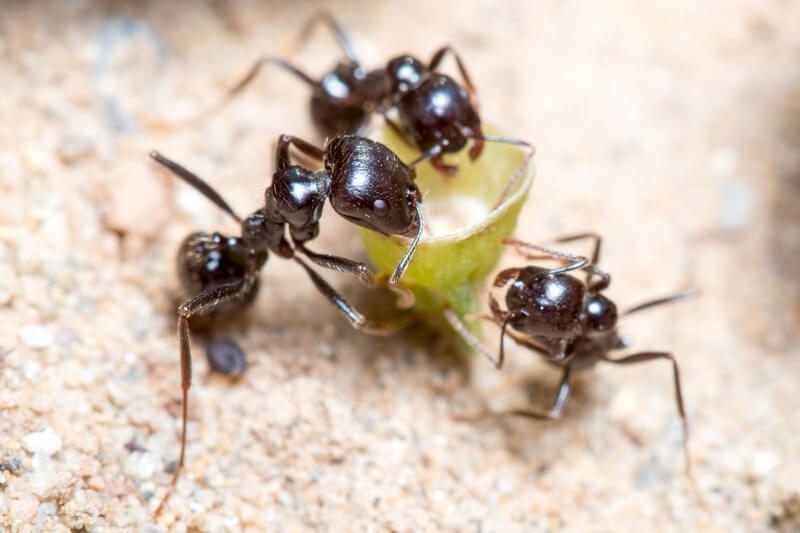
When the colony has grown to a certain size, you can also provide them with some additional sources of protein to boost the development of the brood. You can offer them almost any type of insect. In the wild, they usually eat crickets, mealworms, fruit flies, and spiders.
If you’re reading this guide, there’s a high chance you're just starting out and that you've just caught your first Messor barbarus queen ant. If that’s the case, you don’t have to worry too much about feeding at this stage.
That’s because Messor barbarus is a fully claustral species, which means that the queen won’t need to eat for at least a month, until she has her first workers.
She especially doesn’t need protein right now, because she can obtain the protein she needs from the decomposition of her wing muscles. However, if you want, you can give her a little drop of honey or some easy-to-break seeds. That should provide her with the energy she needs to start her own ant colony!
Hibernation
Messor barbarus needs hibernation. They hibernate through the winter, from around late October to early March. They require at least a couple of months of diapause, a biological phase in which the queen doesn’t lay eggs.
This phase is crucial for the health of the queen, and it’s the only time in the whole year when she can peacefully take some rest.
For this species, the ideal temperature for hibernation is around 15 degrees Celsius. I would not suggest going much lower than this, as it could create problems for the long-term growth of the colony.
If you don’t have an available refrigerator, you can place the colony in the basement or garage, where the temperature is not too low or too high.
If you're a beginner ant keeper and this is your first hibernation, I strongly suggest you check out this other guide! Here, I explain in detail every aspect of this complex process called hibernation! What it is, why ants hibernate, and the most effective ways to hibernate your beloved ants!
Nest Type
When building or buying a nest for this species, keep in mind that they need a humidity gradient inside the chambers. Some chambers should have low humidity levels for the storage of the seeds, while others should have a more humid climate for the brood and the colony.
Let's see what the best types of nests are for this extremely cool Mediterranean ant species!
Ytong Nest
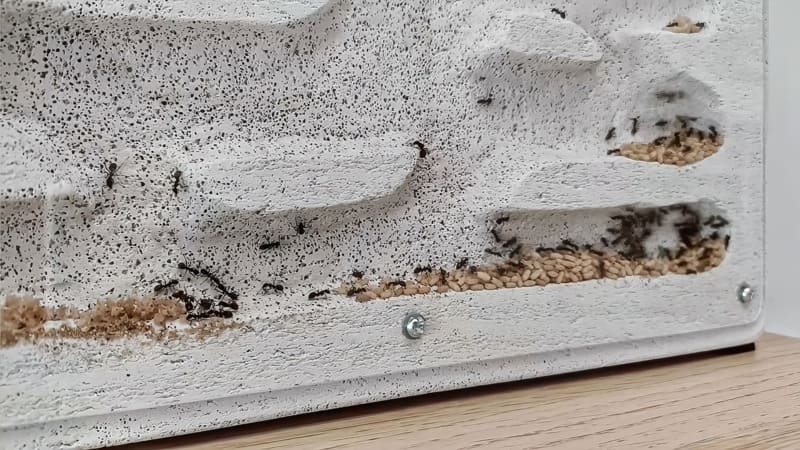
When it comes to choosing a formicarium for Messor barbarus, you have a lot of options.
One of the most commonly used nest types for this species is Ytong. Ytong is a special type of aerated concrete, typically used in construction. It is very popular in ant keeping due to its moisture-retention properties, and it’s suitable for housing a colony of this species.
This species really loves this material, and if you choose this type of nest, you can be sure that your colony will thrive in it! Keep in mind that this species can easily chew through this material, so I suggest placing the Ytong block into some sort of plastic or glass enclosure.
You can easily find this type of nest online. If you prefer D.I.Y. projects or want to save money on a nest, this material is very easy to sculpt! You can create all the chambers just by using a screwdriver!
Online, you can find many tutorials on how to build one of these! Like this one!
Acrylic Nest
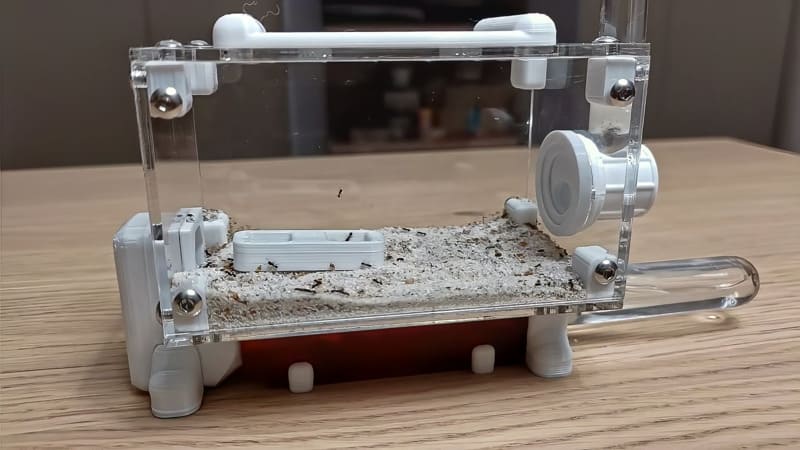
Discount!
Get this extremely cool ant nest on the WaKooshi online shop! Use the discount code BRUMA to get 10% off your entire order!
Another option for housing a colony of Messor barbarus is an acrylic nest.
Acrylic nests are perfect for housing almost every species of ants, including the colonies of Messor barbarus. They are relatively inexpensive compared to others, and you can easily find them in almost every ant keeping online shop.
When it comes to choosing which acrylic nest to get, you have plenty of options. All-in-one nests, modular nests, test tube-based nests… You are spoiled for choice!
If you like the idea of housing your colony inside one of these nests, I suggest you check out this product review! It's a review of the extremely cool ant nest in the picture above!
Naturalistic Setup

Another option could be a more naturalistic setup. For this easy nest alternative, all you need is a tank, some dirt, and, if you want, some decorations.
This nest perfectly replicates their natural environment, making it easier for the ants to settle in. When choosing the enclosure for this type of nest, make sure to get one without any gaps between the various parts!
If you like the idea of creating a naturalistic setup for your ant colonies, you will definitely enjoy this tutorial! In this guide, you will learn everything you need to know to create an amazing jar terrarium, just like the one in the picture above!
I hope you have found this guide helpful!
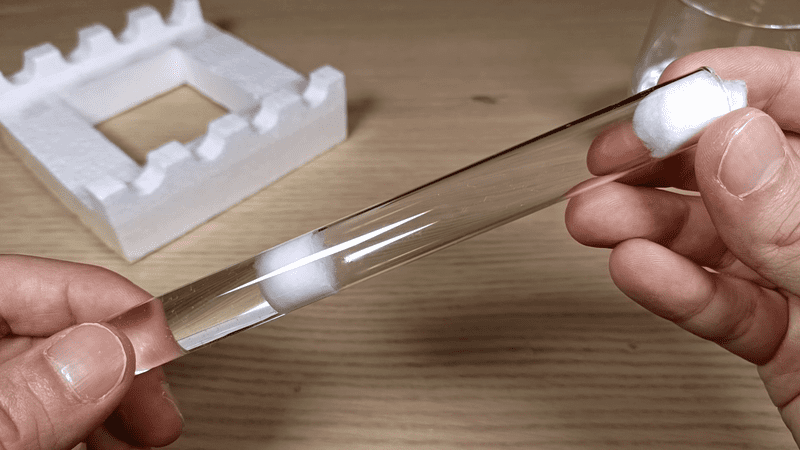
If you just found your queen and want to know how to create the perfect environment for her, check out this guide on how to make a test tube setup! This is the perfect way to start your ant colony!
FAQs
The ideal temperature for Messor barbarus is between 21 and 26 degrees Celsius.
Messor barbarus needs to hibernate through the winter, from around late October to early March, requiring at least a couple of months of diapause.
Messor barbarus needs a diet rich in protein and sugar, primarily obtained from seeds, along with optional insects as additional protein sources.
Messor barbarus is commonly housed in Ytong nests or acrylic nests, both of which provide suitable humidity and temperature conditions.
During her first month, the queen does not need to eat regularly, but you can provide her a little drop of honey or some easy-to-break seeds for energy.

